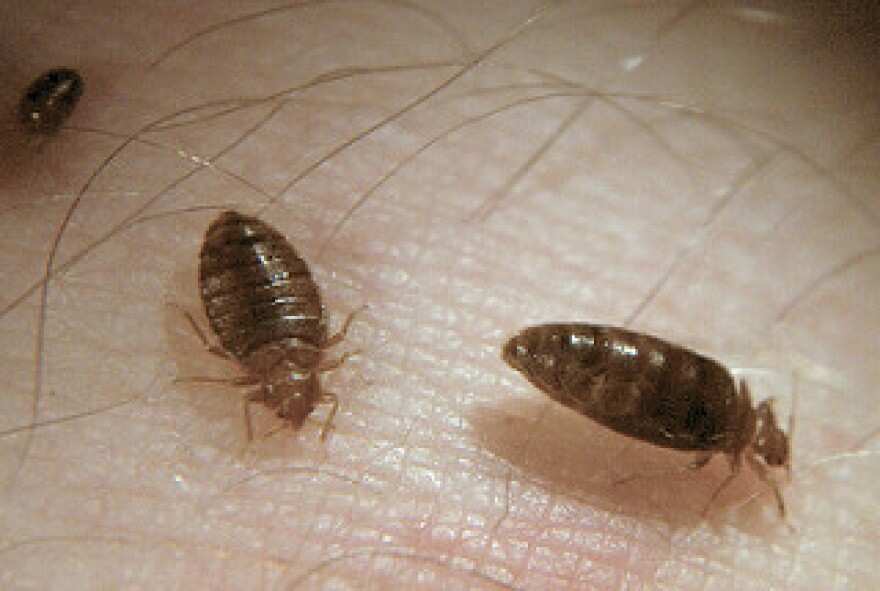For many years, worrying about letting the bedbugs bite wasn’t something most Americans had to think about before going to sleep. But over the past decade or so they seem to have come back with a vengeance.
This week on “Take Care,” Dr. Harold Harlan, a bedbug specialist, tells us what we need to know about bedbugs and how we can avoid them. Harlan is a retired military medical entomologist whose research through raising bedbugs has been instrumental to helping the U.S. develop a federal response to the problem. Through his work he has earned the Environmental Protection Agency's bronze medal, the highest honor the EPA bestows.
There are 94 different species of bedbugs according to Harlan, but there is only one species we tend to focus on. This is known as the common bedbug because it specifically feeds on people.
“We’ve taken it with us wherever we’ve been in the world,” Harlan said.
This could be because they’re hard for us to see. Bedbugs are flat and only about 5 millimeters in length, only becoming slightly more visible when they swell after they feed, says Harlan.

“They only feed about once every, maybe five to seven days when hosts are available,” Harlan said.
And when they’re not feeding, they’re usually hiding. Bedbugs are nocturnal, Harlan says, and like to keep themselves concealed, such as under blankets and in mattresses.
But why did they seem to disappear in the U.S. until recently?
Harlan says the use of insecticides narrowed down the population of bedbugs for a while, making them rare and uncommon in most developed countries. However, in less developed countries, Harlan says people have almost just learned to live with them since they’re not much of a health concern.
There have been about 45 different human pathogens (illness causing agents) found in bedbugs, according to Harlan. But none of which were found to have the ability to spread from person, to bedbug, to another person, in the way mosquitos can transmit disease. Rather, the most pressing health concern with bedbugs is the skin irritation caused by their bite.
“We react to the proteins and other chemicals in their saliva,” Harlan said. “But the bite itself will vary with the individual. Some people react very quickly. Some people take several weeks before they have any reaction at all to that bite.”
But how do you know those bites are from bedbugs and you have an infestation?
Harlan says the ideal way to identify an infestation is by catching a bedbug you see crawling on you and taking it to a specialist to see if that is in fact what it is. However, this can be a bit tricky since they’re so small and hard to see. So Harlan gives some other tell-tale signs.
Since bedbugs are unable to digest the hemoglobin in our blood, it comes out a brownish color in their liquid fecal matter. Sounds gross, right? But this will leave stains and allow you to find where they’re nesting in your home, says Harlan.
Along with this, bedbug eggs may also be easy to spot.
“They’re pearly white, even after they’ve hatched. They stick them to whatever surface they are near when they lay the egg,” Harlan said.
So once you know you have them, you most likely want to get rid of them, unless you’re like Dr. Harlan and want to catch them for research purposes.
While Harlan says a significant infestation will require professional assistance, there are things he advises you can do on your own.
- Isolate your bed from other objects or clothing in the room
- Put a tin can with mineral oil next to each bedpost (this will trap them)
- Wash or dry clothes they may be on in water or heat of 120-140 degrees Fahrenheit
In the meantime, sleep tight and don’t let the bedbugs bite.




